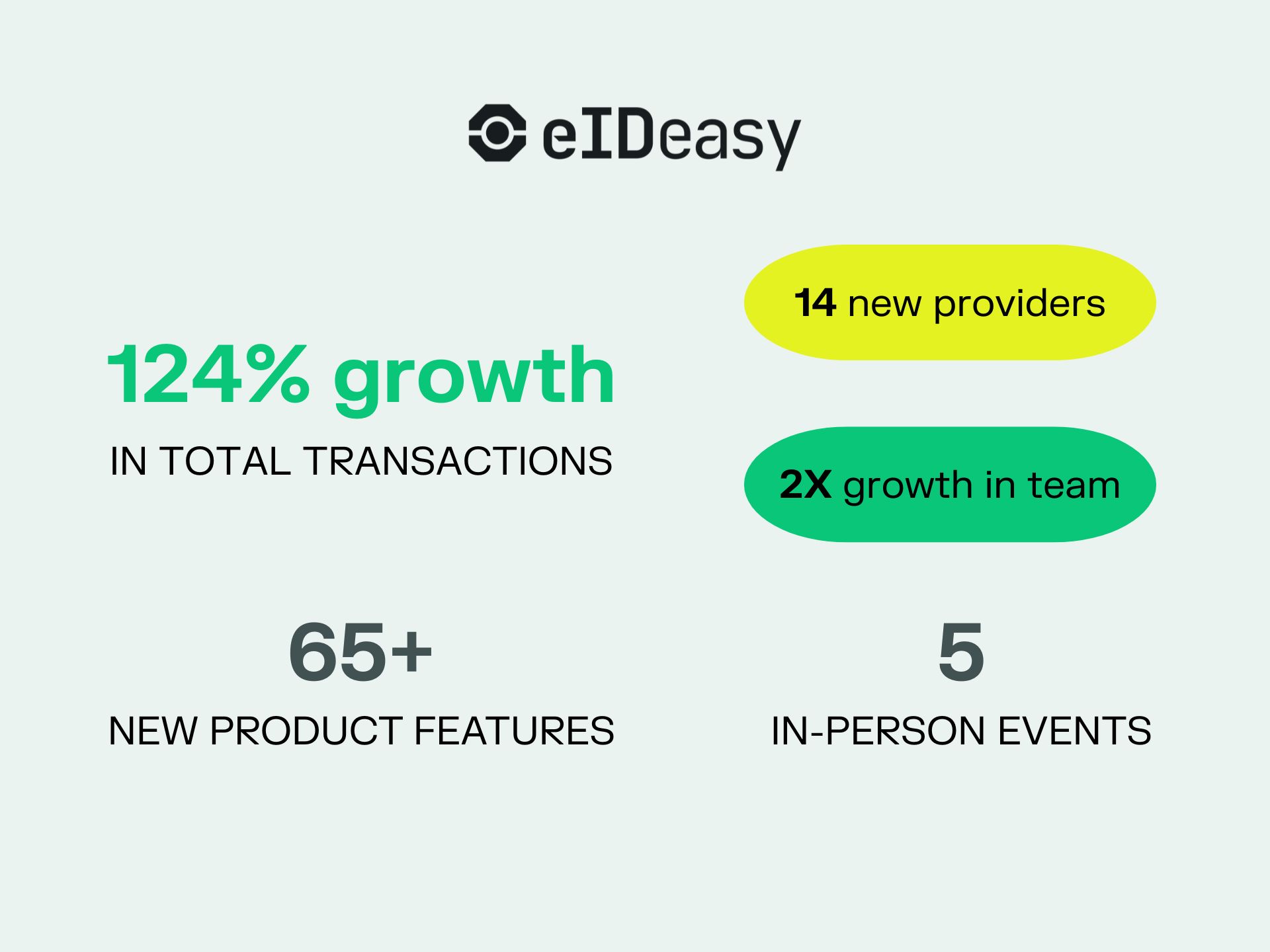Worldwide access to secure & compliant eSignatures, eSealing, and eID
One integration to access a worldwide network of Qualified Trust Service Providers (QTSPs) and Certified Authorities (CAs), for eSignatures, eID authentication, and eSealing while ensuring full compliance with local regulations.
Better together. eID Easy partners with companies you know and trust.







One API integration, worldwide coverage: Secure eSignature, eID Authentication & eSealing solutions
Build trust across borders with integrated eID, eSignatures, and eSealing solutions.
eSignatures
Accessible eSignatures for any business
Connect your business to global providers to access Qualified (QES) and Advanced (AdES) eSignatures
eID Authentication
Authenticate users with global ID systems
Easily integrate public and private ID providers worldwide through a single API
eSealing
Seal and authenticate documents at scale
Efficient, tamper-proof document sealing, tailored to meet high-volume needs.
Expand your business’s global reach and build trust with customers and partners worldwide.
Industry-leading coverage
With one API, you’ll access 80+ trusted eSignature and eID authentication methods, covering 160+ countries and territories worldwide.
Built for global compliance
With eIDAS-approved providers and ISO 27001 certification, your business stays secure and compliant across borders.
No more multiple integrations
A single API that connects your business to a network of worldwide Qualified Trust Service Providers (QTSPs) and Certified Authorities (CAs).
Itsme
Smart-ID
SPID
iDIN
D-Trust
certSIGN
MitID
Veriff
beID
iDIN
Mojeid
OneID
D-Trust
eDO
DIIA
Audkenni
SwissID

Mobiil-id
80+ supported methods for eSignatures and eID Authentications
All solutions meet the highest standards of security and legal recognition, ensuring fast, compliant digital transactions globally.

Simplifying rental agreements in 3 countries: Ramirent’s digital shift with eID Easy
“Ramirent needed a service for authentication and electronic signatures. eID Easy had a competitive package and supported all the Baltic countries, therefore the choice was obvious.”

Higher volume of signed rental contracts through online channels, with both new and existing customers engaging more frequently with the service.
Built for developers
Access global identity providers with a single API
eID Easy simplifies the process by offering one API that connects your business to a network of worldwide QTSPs and CAs, eliminating the hassle of multiple integrations.
{
"files": [
{
"fileContent": "JVBERi0xLjMNCiXi48/T...",
"fileName": "contract-2025-03-25.pdf",
"mimeType": "application/pdf"
}
],
"client_id": "{{client_id}}",
"secret": "{{secret}}",
"container_type": "pdf",
"signature_redirect": "example.test/signature-complete",
}
For startups, global enterprises, and everyone in between
Our product expertise and global connections empower service providers, technology partners, and platform solutions to benefit from seamless eID and eSignature capabilities.

Worldwide network of trusted providers
With eID Easy’s one API integration, your business can connect with 80+ Qualified Trust Service Providers (QTSPs) and Certified Authorities (CAs) worldwide—for both eSignatures and eID authentication.
Global growth made easy
With eID Easy, your business can focus on what really matters—expanding your reach and building trust with customers and partners worldwide.
Built for global compliance
We meet the highest standards, with ISO 27001 certification and eIDAS-approved providers ensuring your business stays secure and compliant across borders.
Industry-leading coverage
Access 80+ trusted eSignature and eID authentication methods, covering 160+ countries and territories worldwide.
No more multiple integrations
eID Easy simplifies the integration process by offering one API that connects your business to a network of worldwide QTSPs and CAs.

Businesses worldwide trust eID Easy
Our technology partners integrate eID Easy’s API into their own solutions, enabling secure eSignatures and eID authentication for their customers.
Expand your service portfolio
Offer eSignatures and eID authentication as part of your platform, backed by 80+ global providers.
Faster go-to-market
Skip the complexity of multiple integrations—use a single, proven API to deploy eID and eSignature capabilities quickly.
Strengthen customer trust
Provide secure, compliant identity verification and document signing solutions that meet global standards.
Global revenue stream
Access 160+ countries and territories with supported eSignature and eID methods, opening new opportunities for growth and expansion.

Alternative solutions for integration
Beyond our core API for eSignatures, eID, and eSealing, we offer additional tools to simplify integration.
Widget
The eID Easy Widget is a client-side embeddable component for creating eSignatures and identifying users through eID Easy API.
Explore Widget
Browser Client
The eID Easy Browser Client is a useful tool for managing the client-side components of the identification and signing processes when using the eID Easy API.
Explore Browser Client
Nextcloud
Use the eID Easy Nextcloud app to sign documents in your Nextcloud instance.
Explore Nextcloud
WordPress
Our Wordpress plugin allows you to log in using any of the supported methods or perform age verifications in your Woocommerce shop.
Explore Wordpress plugin
One integration, worldwide access
With eID Easy, your business can focus on what really matters—expanding your reach and building trust with customers and partners worldwide.












.avif)

